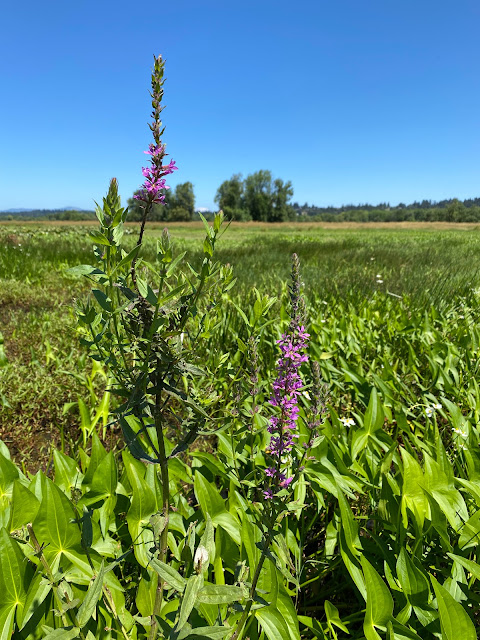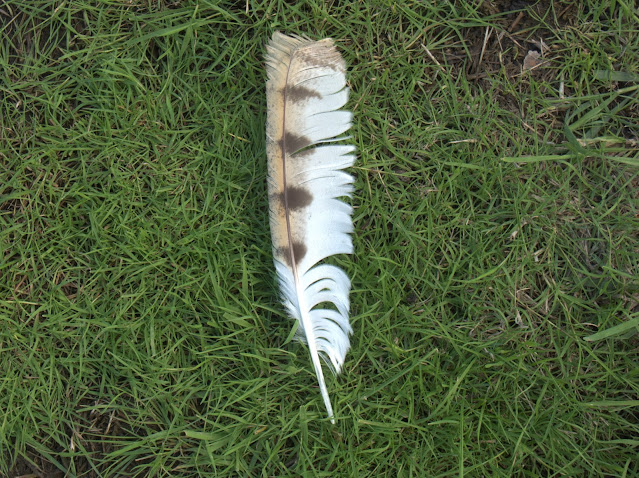Native Species Appreciation & Farewell
In habitat management, we talk a great deal about invasive species around the Refuge: what is bad, what is worse, what seems to be out of control, or just kill it! One of the downfalls of learning invasive plant species is that once you learn how to identify it, you can never "unsee" it, even in your daily life. For instance, while on a walk to a local park with my dog in North Portland, I regularly see Shiny Geranium, Queen Anne's Lace, and Poison Hemlock. Coincidentally, many nurseries still sell invasive species such as Periwinkle (Vinca spp.) and English Ivy, further perpetuating the problem. It makes you realize how overrun the world is with invasive species, which can be overwhelming and disheartening.
Hence, sometimes we forget to appreciate all the amazing native fauna and flora the Refuge has to offer. For instance, the Western Tiger Swallowtail Butterfly (Papilio rutulus) is a common pollinator found in this region and is usually found in meadows, forest edges, waterways, and urban areas. I have always had a fondness for butterflies and a fascination with their ephemeral lifecycle.
 | |||||||
| Photo: Western Tiger Swallowtail feeding on a flowering Canada Thistle (Cirsium arvense), a Class C noxious weed. | |
As a wetland enthusiast and amateur herpetologist, it is nearly impossible not to bring attention to one of our most common frog species on the Refuge, the Pacific Chorus Frog or Pacific Tree Frog (Pseudacris regilla). This small (1-2 inch long) frog is the most varied in color of the frogs found in Washington. Although green and brown are the most common color variations, I have personally encountered gold, tan, and even purple Pacific Chorus Frogs in the field. Pacific Chorus Frogs are typically found in wetlands, ponds, mountain meadows (up to 8,000 ft. in elevation), woodlands, and disturbed areas. Usually, if you hear frogs calling in this region, there is a good chance they are male Pacific Chorus Frogs.
 |
| Photo: A (standard) green Pacific Chorus Frog |
 | |
| Photo: A brown/spotted Pacific Chorus Frog |
A Farewell to the Friends
Unfortunately, this will be my final blog post for the Friends of Ridgefield National Wildlife Refuge. In September, I will officially be leaving my position as Habitat Restoration Technician with the Friends to pursue a Master's in Environmental Management at Portland State University (PSU). To say I will miss working at the Refuge is an understatement. From daily close encounters with wildlife to engaging with all of our dedicated habitat volunteers, working at Ridgefield has been one of the most rewarding jobs of my life.
While working in the field over the past year, I was exposed to extreme (record-breaking) heat, the perpetual Pacific Northwest rain, snow, hail, ticks, and SO many mosquitos- but nothing was more daunting than overcoming my social anxiety. You may not know this about me, but I am an introvert and was very shy when I was younger. However, this job has pushed me both personally and professionally by helping me to overcome fears. And, even though I may still be terrible at Zoom meetings, I am no longer afraid to voice my opinion. I never thought I would lead a group of volunteers in the field or teach students in a classroom, but here I am now about to start a Graduate Teaching Assistantship at PSU.
Thank you to everyone who pushed me beyond the limits I couldn't even imagine before, you have made me a better person and I cannot thank you enough.💖
-Justine Casebolt (Future Restoration Ecologist, hopefully... 😁)


Comments
Post a Comment